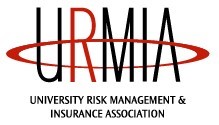ERM for Higher Education
Successful risk management strategies require a process and framework that work for higher education administrators.
Results require focusing on three essential tasks and taking a clear path to manage complex institutional risk.
How well or how poorly depends on how much support they receive.
Risk:Resolve® | ERM for Higher Education | The Process
Four.
Risk identification efforts across campus result in a risk inventory.
Five.
Categorizing and sorting the risks in the risk inventory takes place. This categorization is aligned with the committees of the board.
Six.
Senior leadership develops a sub-set list of high priority risks from the risk inventory. This listing is the risk register.
Seven.
Individuals familiar with the risks on the risk register complete risk summary worksheets on those risks.
Eight.
Senior leadership uses the information gathered from these risk summary worksheets to select a handful of high priority risks on which to focus.
For these risks, a designated risk owner is asked to add detail to the risk summary worksheet. The risk owner seeks out and receives informed input from risk collaborators who are familiar with the context, characteristics and potential adverse consequences of the risk.
Nine.
The risk owner then updates the risk summary worksheet and delivers it to the person designated by senior leadership as having risk oversight responsibilities.
Ten.
Senior leadership decides who will be responsible for compiling the detailed risk summary worksheets into a risk roll-up report and distributing it to the senior leadership team and the governing board.
Eleven.
A risk mitigation progress dashboard is developed to reflect the most recent risk summary worksheet updates. It provides a numeric representation of progress toward intended risk mitigation milestones, and indicates whether progress has been positive, negative, or unchanged.
Twelve.
Senior leadership and the governing board create a schedule for receipt of updates, and review of the risk roll-up report and the risk mitigation progress dashboard.
Practical ERM for Higher Education
Evaluating, collaborating, and mitigating are all required to effectively manage complex institutional risk.
Doing so ACROSS INSTITUTIONAL SILOS can be challenging.
We provide templates, worksheets, and guidance to colleges and universities seeking a practical approach to ERM for Higher Education.
Risk:Resolve® Practical ERM for Higher Education
Our "Risk Summary Worksheet" drives the entire risk management process.



